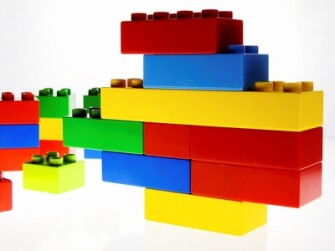
UPDATED
Strong spatial skills give kids an edge in science and math, and these skills can be taught. Scientists know this. Yet to a large degree, lessons in spatial learning haven’t been incorporated into the curriculum.
A pilot program supported by a $1.4 million federal grant and led by researchers from the Johns Hopkins Science of Learning Institute aims to change that.
The Hopkins team—led by the Institute’s executive director, Kelly Fisher, and its outreach and evaluation specialist, Kristin Gagnier—will work with teachers from Prince George’s County schools in Maryland to write the curriculum and test it with 400 3rd graders. In lessons on earth and space science or engineering design, for instance, students will do sketching and visual comparisons and modeling of what they see. Teachers will guide students in the interpretation of graphs and gauge whether the instruction has strengthened spatial ability.
Spatial skills help us to organize and reason about the objects in the world around us. We need these skills to read maps that guide us through unfamiliar cities. When we’re packing for trips these skills help us to decide how much we can squeeze into our carry-on luggage. Children playing with blocks or Legos are essentially training for these more grown-up spatial tasks.
But there’s a more critical reason we need spatial skill building at an early age. “If we examine spatial skills early, they will be predictive of how well a child does in math,” said Amy Shelton, a cognitive scientist and the director of research at the Johns Hopkins Center for Talented Youth, who is also one of the researchers on the project. In a video, she breaks down the importance of play in developing spatial skills and shows how these skills can be honed well before 3rd grade.
Julie Rasicot, in an Early Years blog post from 2012, reports on a study that proves the connection between spatial skills and improved math ability. The researchers’ conclusions were based on an experiment involving 152 1st and 2nd graders who were tested at the beginning and the end of a school year to see how well they could locate numbers on a number line running from zero to 1,000. The kids who’d shown the strongest spatial skills when tested at the beginning of the year also showed the most growth in their “number line knowledge.”
The Johns Hopkins team will explore ways to explicitly teach these skills over the next four years. In the first year, they’ll weave spatial learning throughout the 3rd grade science curriculum, and in the second year, they’ll work with Prince George’s County teachers to fine-tune the approach. In the third year, four teachers will test the curriculum in their classrooms, reworking it where needed.
In the fourth year, the curriculum will be tested in 20 classrooms, with a total of 400 students. Researchers will determine if the lessons were effective by comparing the 3rd graders’ beginning and end-of-school-year spatial skills tests with tests given to another 400 3rd graders who weren’t part of the experiment.
If the project proves successful, the curriculum will be expanded to all 3rd grade classrooms in Prince George’s County, and possibly rewritten for other grade levels.
Image: Pixabay
UPDATED: This post has been updated to include the names of the two lead researchers on the project.
Related stories:
- Spatial Skills Seen as Key to Math Learning
- Study: Early Spatial Learning Promotes Math Competency
- Spatial Skills: A Neglected Dimension of Early STEM Education
- How Can Students Better Apply Math Learning? New Studies Hold Answers